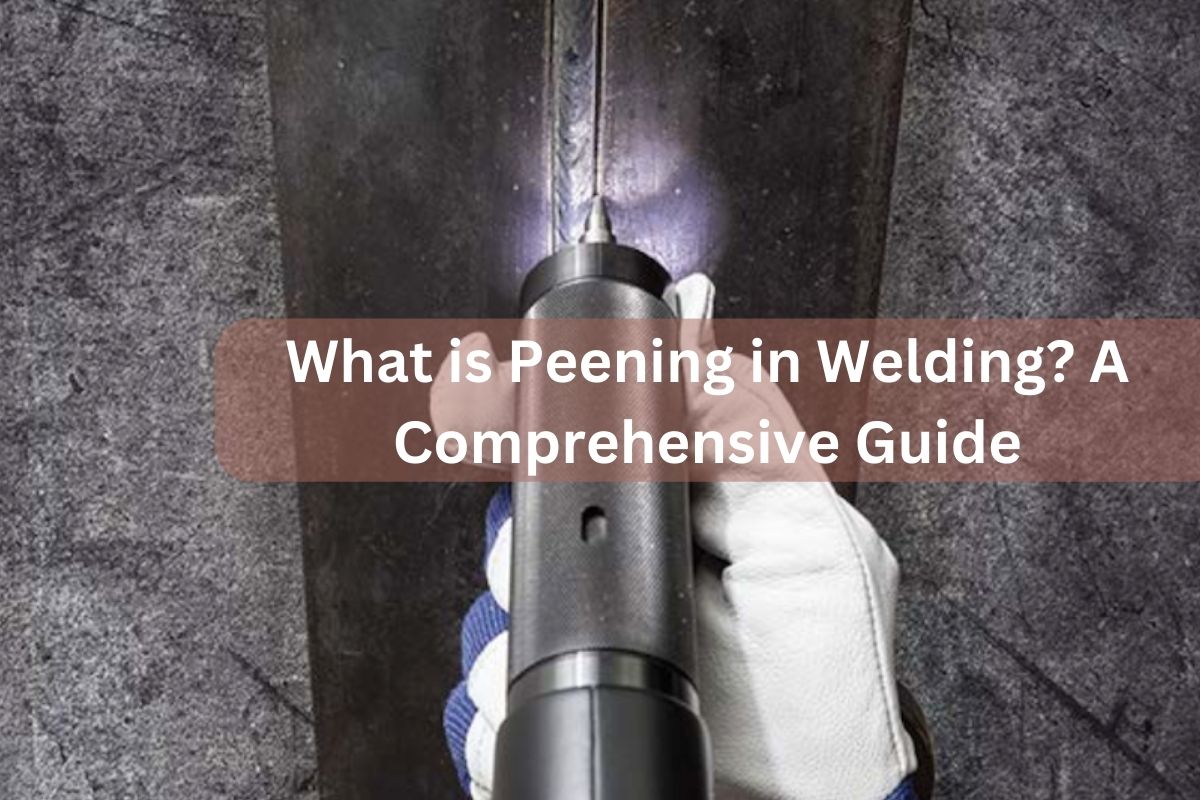What is peening in welding?
Peening is a process used in the field of welding.
What this method actually is, and the rationale for its application.
Check the answer below.
What is Peening in Welding?
As a form of welding, peening aids in the durability of joints.
Yet, peening or hammering cannot be used as a substitute for heat treatment when stress relief is required to soften hard welds and HAZ areas to prevent brittle hydrogen or sulfide stress cracking.
Reducing transverse shrinkage stresses is helpful since they can lead to distortion or breaking in thicker sections or vessels.
During the freezing and cooling phases of the welding temperature, the weld metal shrinks.
Plastically deforming the metals surface before the weld (cold working). The following layer of weld metal will eliminate the cold work from the previous layer.
It is generally performed on carbon steel and low alloy steels, although it has also been applied to stainless steels and high nickel alloy steels.
Read Also : Non-Destructive Testing (NDT): Basic & Methods Made Easy
Types of Peening
There are four basic types of peening processes:
Manual (Hammer) peening
By using a conical (or spherical) hammer, it is possible to peen the welding joint surface manually. Utilize this technique for flat or fillet joints.
Automated peening
Automated (mechanical) peening involves deforming and compressing the welding joint’s surface while stamping it with various needles that resemble nails.
To avoid the welding connection becoming overly distorted or breaking, you must use the proper amount of force when employing this procedure.
Shot Peening
Shot peening involves spraying small metal media over the surface of the weld joint using a motorized wheel.
This technique is typically employed when the joint has weld imperfections or discontinuities.
Roto (Flail) Peening
It follows the same action of compressing the surface area.
On the other hand, Roto peening involves several metal flaps that expand laterally to create a spindle.
A drilling machine that rotates at 3,000 revolutions per minute receives the spindle-like tool (RPM).
The peening effect occurs when the flaps make contact with the weld surface.
The Purpose of Peening
Peening is useful to repair welds of thick cast iron and wrought iron and welds of nozzles or patches of thick wall vessels.
Use medium and large-size pneumatic chipping guns with round-nose tools.
The weld surface will have dents and chips, but this is not an issue because the following layer will melt the surface anew.
Peening can also increase a welded joint’s strength and fatigue life. To accomplish it, expand the weld’s surface area and compressive stress.
Moreover, it can aid in the eradication of surface flaws like slag inclusions. Slag inclusions are microscopic molten metal pockets that form inside the weld.
How to do Peening?
The first welding process seam should not be struck because of the risk of cracking the thin weld metal.
The last coat also should not be hammered due to the poor nature of the cold-worked coating.
New striking may be carried out after the weld metal has cooled to the preheat or interpass temperature.
Placing two punch marks across the weld joint and evenly spacing along the weld path is one approach to check whether the weld was properly punched.
The punch mark distance must be peened after each layer of welds until it reaches its original size before being measured with a pointed divider.
After the weld seam is deposited and hammered, the spacing shall be reduced to less than 1/32 inch.
The impact of shrinkage and pounding on the punch-mark distance is lessened when the weld thickness is more than an inch.
The same amount of peening should be applied to balance the weld if the preceding beating kept the punch-mark distance.
Another way to control peening is to tap until the welding ripples are smooth and then stop.
This will give you a precise beating and prevent over-beating.
The Type of Welding That can Use Peening
Peening is not just for certain types of welding.
It can be utilized in a wide range of applications and welding techniques, such as stick welding, plasma arc welding, tungsten inert gas welding, gas metal arc welding, and more.
Heat-treated steels are frequently welded using peening.
It is commonly acknowledged that the characteristics and caliber of the metal used to weld the structures significantly impact their ability to resist fatigue.
The surface of steels that have not been heated up can also be peened.
Areas Where Peening Should be Concentrated
Peening can be beneficial in three key concerning areas: reducing stress corrosion by breaking the weld or native metal, hiding or disguising weld deformities, and hardening the top layer of an area.
Compressive stress is applied using simple shot peening to stop long-term cracking caused by strength exhaustion or stress corrosion.
Corrective measures could be implemented by stretching or compressing a particular region.
This helps to provide immaculate flatness for the weld surface even when the weld surface has been distorted by heat, complex structural forms, or surface machining.
To make the surface of the work harder, peening can be utilized to create fuselage skins, wing flaps, access panels, and/or other parts.
Read Also : Visual Inspection in Weld Quality Testing: How it Works?
Conclusion
In welding, peening is a stress-relieving procedure that increases the overall strength of your weld joints.
The metal weld has a better chance of preventing fatigue resistance failure by minimizing flaws and the potential for surface cracks to occur.
Avoid skipping peening when welding because the consequences are too great.
A megastructure’s eventual collapse is a terrible event that could cause harm or, worse yet, result in fatalities.
Peening offers several advantages that can help improve the welding process.
Because it increases the fatigue life of the weld by increasing its surface area, thus the weld will be able to resist stress.
Hopefully, this article helps to answer your question about what is peening in welding, and you get a better understanding.


